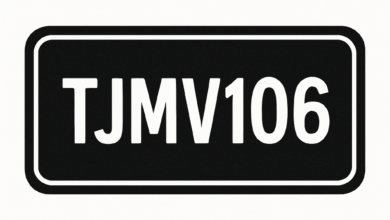TM54 Assessments: The Key to Unlocking Energy Efficiency in Non-Domestic Buildings

In the current landscape of UK construction, energy efficiency isn’t just an overused buzzword; it’s a critical factor that influences a building’s environmental impact, operational costs, and overall sustainability. While SAP calculations have long been the go-to method for assessing energy performance in residential dwellings, non-domestic buildings require a different approach. That’s where TM54 assessments come into play.
TM54, also known as CIBSE TM54: Evaluating Operational Energy Performance of Buildings at the Design Stage, is a methodology specifically designed to predict the actual energy consumption of non-domestic buildings. It goes beyond theoretical calculations and considers real-world factors to provide a more accurate picture of how a building will perform in operation.
In this article, we’ll delve into the intricacies of TM54 assessments, exploring their purpose, methodology, benefits, and how they can help you create energy-efficient and sustainable commercial buildings.
The Need for TM54: Beyond SAP
While SAP calculations are effective for assessing the energy performance of dwellings, they may not be suitable for non-domestic buildings due to their diverse nature and more complex energy usage patterns. Commercial buildings, offices, retail spaces, and industrial facilities often have unique operational characteristics that require a more tailored approach to energy assessment.
TM54 fills this gap by focusing on predicting the actual energy consumption of non-domestic buildings. It takes into account factors like occupancy patterns, equipment usage, and specific building systems to provide a more realistic estimate of energy performance. This allows for a more accurate evaluation of a building’s energy efficiency and helps identify opportunities for improvement.
Key Components of a TM54 Assessment
A TM54 assessment involves a detailed analysis of various factors that influence a building’s energy consumption. These include:
- Building Fabric: The thermal properties of the building envelope, including walls, roofs, floors, windows, and doors. This includes factors like insulation levels, U-values (a measure of heat loss), airtightness, and solar heat gain.
- Building Services: The efficiency and operation of heating, cooling, ventilation, and lighting systems. This includes the type and efficiency of equipment, control systems, and how they are scheduled and operated.
- Occupancy and Usage Patterns: How the building is used, including occupancy levels, operating hours, and equipment usage. This considers factors like the number of people in the building, the types of activities they perform, and the equipment they use.
- Climate Data: Local weather patterns and external temperatures that influence energy demand. The model takes into account the specific climate conditions of the building’s location, including heating and cooling degree days, solar radiation, and wind speeds.
- Process Loads: Energy used by specific processes or equipment within the building, such as industrial machinery or IT equipment.
Benefits of TM54 Assessments
TM54 assessments offer a range of benefits for building owners, developers, and facilities managers:
- Compliance with Building Regulations: TM54 assessments may be required to demonstrate compliance with Part L2A of the Building Regulations for certain non-domestic buildings.
- Energy Efficiency Optimization: By identifying areas of potential energy waste, TM54 assessments help you make informed decisions about design, construction, and operation to minimise energy consumption and reduce costs.
- Improved Occupant Comfort: TM54 considers factors like thermal comfort and indoor air quality, ensuring that your building provides a healthy and productive environment for occupants.
- Reduced Carbon Footprint: By optimising energy efficiency, TM54 assessments contribute to reducing your building’s carbon emissions and environmental impact.
- Enhanced Marketability: A building with a demonstrated commitment to energy efficiency through a TM54 assessment can be more attractive to tenants and investors.
- Informed Decision-Making: TM54 assessments provide valuable data and insights that can inform design decisions, equipment selection, and operational strategies, leading to a more efficient and sustainable building.
The TM54 Assessment Process: A Journey Towards Energy Efficiency
While the concept behind TM54 assessments might seem straightforward, the process itself involves a series of meticulous steps to ensure accuracy and provide valuable insights into your building’s energy performance. Let’s break down the typical journey:
Data Collection: The Foundation of Accuracy
The assessment begins with a comprehensive gathering of information about your building. This isn’t just a casual glance at blueprints; it’s a deep dive into the nitty-gritty details that influence energy consumption. Here’s what assessors typically need:
- Architectural Drawings and Specifications: Detailed plans showing the building’s layout, dimensions, orientation, and construction materials.
- Building Services Information: Specifications and operational details of heating, cooling, ventilation, and lighting systems, including equipment types, efficiency ratings, and control strategies.
- Occupancy and Usage Patterns: Information about the intended use of the building, expected occupancy levels, operating hours, and typical equipment usage patterns. This might involve considering factors like the number of employees in an office, the hours of operation for a retail space, or the specific processes in an industrial facility.
- Climate Data: Weather data specific to the building’s location, including temperature, humidity, solar radiation, and wind speeds. This allows the assessment to account for the impact of local climate conditions on energy demand.
- Process Loads: For buildings with specialised equipment or processes that consume significant energy, details about these loads are essential for accurate modelling.
Energy Modelling: Bringing Your Building to Life (Virtually)
Once the data is collected, it’s time to create a dynamic simulation model of your building. This isn’t just a static representation; it’s a virtual environment where assessors can simulate how your building will interact with its surroundings and how its various systems will perform under different conditions.
The model takes into account a multitude of factors, including:
- Heat Transfer: How heat flows through the building envelope (walls, roof, floors) and the impact of insulation, airtightness, and thermal bridging.
- Solar Gains: How much solar radiation enters the building through windows and other openings, and how this affects internal temperatures.
- Ventilation and Air Infiltration: The rate of air exchange within the building and how it influences heating and cooling demands.
- Internal Gains: Heat generated by occupants, lighting, equipment, and other internal sources.
- Occupancy Schedules: How the building is used throughout the day and week, influencing lighting, heating, and ventilation needs.
By simulating these interactions, the model provides a realistic prediction of your building’s energy consumption under various scenarios.
Analysis and Reporting: Turning Data into Insights
The energy model generates a wealth of data, but it’s the assessor’s expertise that turns this data into actionable insights. The analysis typically involves:
- Comparing to Benchmarks: The assessor will compare your building’s predicted energy performance to benchmarks and targets set by building regulations or industry standards.
- Identifying Improvement Opportunities: The assessor will pinpoint areas where energy efficiency can be improved, such as upgrading insulation, optimising HVAC systems, or implementing more efficient lighting.
- Estimating Cost Savings: The assessment can also provide estimates of the potential energy and cost savings associated with various improvement measures, helping you make informed decisions.
The final output is a comprehensive report that details the building’s predicted energy performance, its EPC rating, and recommendations for improvement. This report is not just a compliance document; it’s a valuable tool that can guide your decision-making, optimise your building’s performance, and demonstrate your commitment to sustainability.
The Importance of Expert Guidance
While TM54 assessments offer a powerful tool for understanding and optimising energy performance, navigating the complexities of the methodology and interpreting the results requires specialised knowledge and experience. That’s where partnering with qualified energy consultants like Focus360 Energy can be invaluable.
These professionals possess the expertise to:
- Ensure Accuracy and Compliance: Accredited assessors are trained in the intricacies of TM54 methodology and can ensure that your assessment is conducted accurately and in full compliance with relevant regulations. This is crucial for avoiding potential pitfalls and ensuring your building meets the required energy efficiency standards.
- Provide Tailored Recommendations: A good assessor doesn’t just deliver a report; they provide actionable insights and recommendations specific to your building. They can help you identify the most cost-effective energy-saving measures, suggest suitable technologies, and guide you towards achieving your sustainability goals.
- Offer a Holistic Approach: Energy efficiency is just one piece of the sustainability puzzle. Many energy consultants like Focus360 Energy also offer expertise in other closely related areas, such as BREEAM assessments, air tightness testing, and ventilation assessments. By taking a holistic approach, you can ensure your building performs optimally across multiple sustainability metrics.
- Navigate the Regulatory Landscape: Building regulations can be complex and are certainly ever-changing. An experienced consultant can help you understand the specific requirements for your project and ensure you stay ahead of any updates or changes.
- Maximise Your Investment: By partnering with experts from the start, you can make informed decisions about energy-saving measures, ensuring that your investments deliver the greatest return in terms of reduced energy consumption, lower operating costs, and improved occupant comfort.
The Bottom Line on TM54 Assessments
TM54 assessments are a valuable tool for anyone involved in the design, construction, or operation of non-domestic buildings in the UK. By providing a realistic prediction of energy performance, they empower you to make informed decisions that lead to more efficient, sustainable, and comfortable buildings.
While you can certainly explore conducting a TM54 assessment yourself, partnering with a qualified assessor ensures accuracy, compliance, and access to expert insights that can help you optimise your building’s performance and achieve your sustainability goals. Remember, investing in energy efficiency is an investment in the future of your building and the planet.



